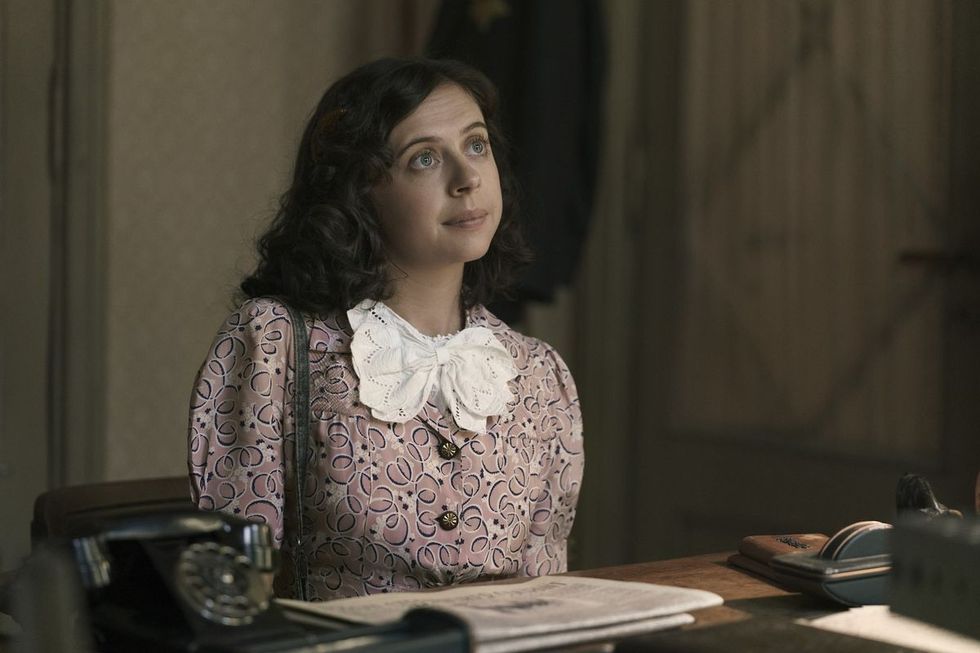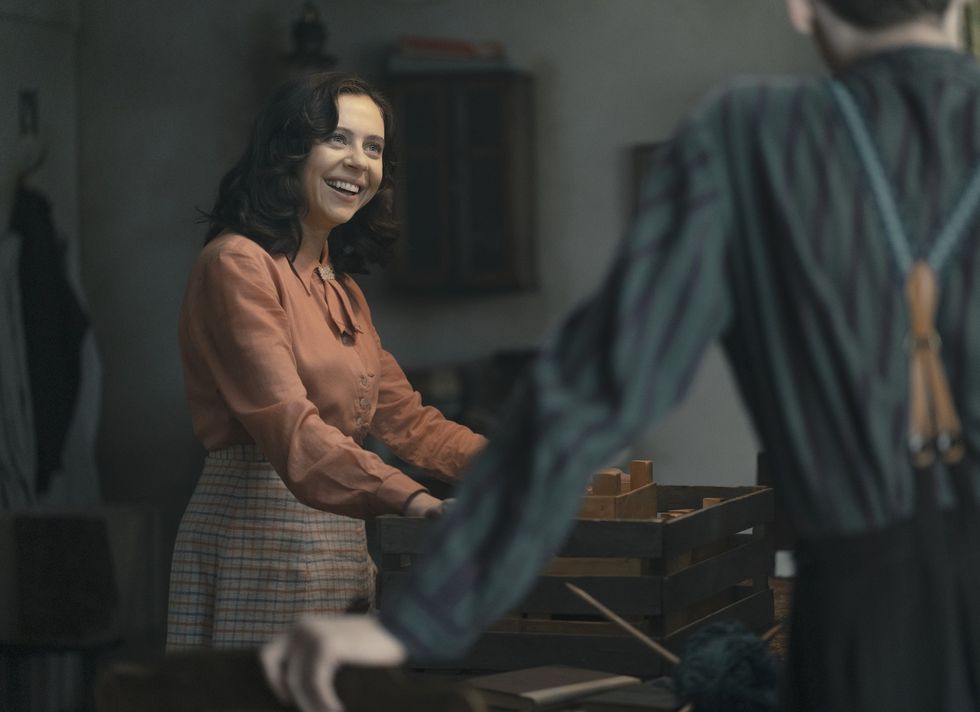
“Anyone, even an ordinary teenager or housewife or secretary, can turn on a small light in a dark room.” — Miep Gies
Miep Gies lived in the Netherlands in the 1920s and 1930s as Adolf Hitler began his rise to power. When the military occupation expanded to Amsterdam, Gies, her husband Jan, and some of their coworkers hid Anne Frank and her family in an attic apartment. A variety of history classes dive into the story of the Frank family, but not as many people know about the woman who hid them — until now.

“I didn't really know anything about Miep before I made the show, so everything I [found out] about her was new,” actress Bel Powley tells me on a Zoom call. “I'm Jewish, so I know a lot about that part of history, but I really didn't know much about what was going on in the Netherlands at the time and know all of the incredible things that the Dutch resistance did. So honestly, when we'd get all the episodes to us and I'd read it for the first time, I always like, ‘Surely this can't be real.’”
Many war stories use larger than life cinematography, telling the story on a huge scale, but the new National Geographic series A Small Light (you can stream the whole season on Disney+) focuses just as much on the small details of life and relationships as it does on the war.
“I think that's what sets our show apart from other historical period dramas,” she says. “It's about the Franks [and] the Nazi occupation, [but] it's also about marriage and it's about coming of age and it's about parenting…We had that room to explore the humanity and the human side of everyone's experiences.”
Powley is familiar with the story of the Franks, both because of studying them in school and her own Jewish heritage (“[My grandmother] would be so proud of me for being in this show”), and to get into the headspace to play the character, she visited the Anne Frank house and rode her bike along the same routes Miep did.
“The other main thing I did was just read her book [Anne Frank Remembered] cover to cover a few times,” she says. “It was just really useful to me to get a sense of her voice…I didn't want to overwhelm myself too much because the other thing too, creating an authentic character and playing an authentic person is just being present on the day and being present with your scene partner and focusing on the script to the narrative at hand.”
In addition to the character arc written on the page, working with her fellow actors and doing her own character work opened up new ideas as Powley figured out how she wanted Miep to be represented.
“I love the process of…really getting into who this person is and building those blocks to eventually become that person that feels real and truthful,” she says. “[You’re] being fluid and reactive and changing the way that you're going to do a scene [based on] the way someone else is acting. And that's all driven by character and who the people are rather than the circumstance around them.”
World War II is the driving circumstance in almost every story set in the 1940s, but Powley mentions that it was important for everyone on set to stay present. “For these people when we were playing them, it was the present. It was modern times,” she says. “I know about the six million Jews, I know about the gas chambers, because we're studying it with hindsight, but at the time…they obviously knew it was really bad but [they were also living] day to day life.”

Showcasing the ins and outs of daily life in this way offers more room for intimate emotional moments. “I think that's what we're trying to make this show through that kind of day to day relatable lens, because that is how it was for these people. And in terms of that, we have lighter moments in the show,” she says. “I think that it actually made it easier because it's in our human nature to find light moments in times of darkness.”
The foundational idea that we all have goodness in us is what Miep wanted her legacy to be. Because she didn’t set out to become a figure immortalized in history. She just wanted to do the right thing.
“It was important for me to always remember that she didn't want to be put on a pedestal and she didn't want to be called a hero,” Powley says. “She really was an everywoman and she wanted us to see ourselves in her. She wanted to be as relatable as she is because she didn't want anyone to think, ‘Oh, she's like this saint, Mother Teresa figure and I'll never be like [her].’ She wanted us all to think, ‘No, I do have that good inside of me. And I know the difference between right and wrong. And I can ultimately say yes and do the right thing.’”
Check out our other Interviews for more exclusive content!
Lead image via National Geographic/Disney+
0 Commentaires